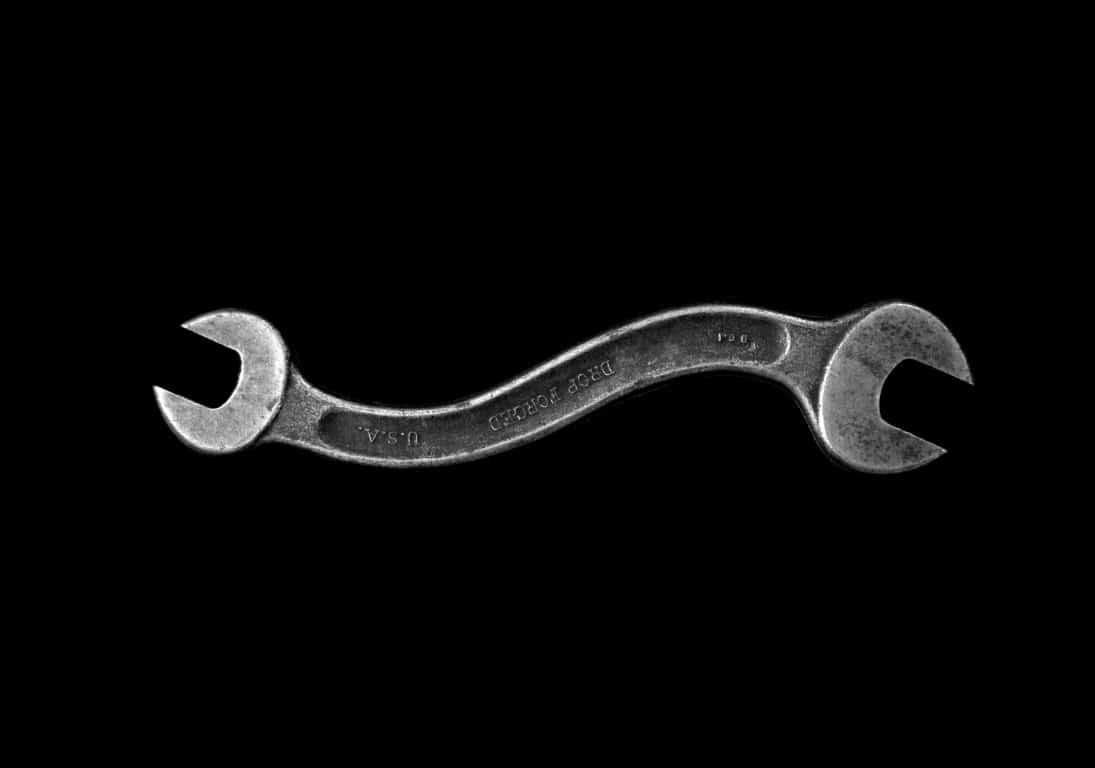Lately there’s been a massive boom in the popularity of making knives out of all kinds of different objects. Lots of YouTubers and other forgers have started making knives out of wrenches.
Do wrenches make good knives? Wrenches are not ideal for making high-quality knives since the carbon content is lower than what you would normally want. This means that the edge retention isn’t great on wrench knives.
Technically, though, you can make a knife out pretty much anything, even a piece of flint.
In this little article I’ll share what exactly to expect with a wrench knife and how to make one anyway.
Table of Contents
What Kind of Steel are Wrenches Made From?
For the purpose of this article, I’ll assume that you intend to use a combination wrench. Other wrenches might be made of a different kind of steel that could be totally unusable for forging knives.
Pipe wrenches are an example of something that will not work well for knives, generally it’s only the jaws that are made out of a hardenable steel. The handle won’t harden whatsoever.
Usually, combination wrenches are made from a chromium alloy steel. Sometimes there’s also a certain amount of vanadium as well. In terms of actual carbon content, they’re generally closest to a medium-carbon steel.
Since wrenches are a medium-carbon alloy steel, you’ll probably find that they’re similar to 4140.
Wrenches are made to take strain, not to hold a sharp edge. You should be able to harden the steel so that makes a great prybar, but it will dull out quickly. Wrench knives are novelty items.
How to Know if a Wrench is Good
Not all wrenches are created equal. Some are next to impossible to heat treat.
The easiest way to know if a wrench will work for a knife is to heat treat one from the same set, and then do something like a file test to check hardness.
You can also check to see how hard the jaws are as-is. If they’re really easy to dent or cut, then you’re probably holding junk steel.
Keep in mind that the large majority of new wrenches are plated in chrome, nickel, or a combination of the two. You might want to remove that before you really start to work with it.
How to Heat Treat a Wrench
When you’re working with “unknown steels” (when you’re not 100% sure about the grade), you’re best off using the magnet method for heat treating.
The simple explanation for this is that you need to heat up the metal until it loses its magnetism. Make sure that the heat is as even as possible so that all of the metal is at this critical temperature, and don’t go hotter that what you need to lose magnetism.
Quench the steel in warm oil. Warmer oil will reduce the risk of cracking and give you more consistent results. Somewhere around 100 F is usually fine.
To warm up oil, I’ll often heat up a second piece of steel along with my workpiece. First dunk this second piece, and your oil will warm up. Then do the real quench on your knife.
Tips for Making a Knife From a Wrench
Even though wrenches aren’t the ideal material to use for a good quality knife, they can still look pretty cool. If you don’t care about performance or you just want to practice, this can actually be a pretty fun little project.
If the wrench you have is plated, I like to remove the plating first. Sandblasting works well, but you need to be careful if you end up using a grinder.
You’ll also want to give some thought as to how much material you have to work with. Doing a good upset to widen out the blade can be hard if you want to keep the box end of the wrench looking original.
Lots of people like going for a karambit style of knife to start with, since it’s already in a pretty close shape to a box-end wrench.
Here’s a nice quick video of a guy doing exactly this so that you can see for yourself what generally goes into making a knife from a wrench:
Really, wrench knives are arguably just a step up from railroad spike knives, but people still like them. If you’ve got a bunch of old wrenches laying around, might as well make something from them.

